Appearance
Chimneys
Bottom line
Combustible chimney enclosures should be mitigated with metal flashing or replaced with noncombustible siding. Spark arrestors are required for wood-burning chimneys and stovepipes. Vegetation within 10 feet of a chimney opening must be pruned.
Overview
Like roof-to-wall complex roof locations, chimneys can accumulate debris, which can be a problem if they have a combustible enclosure (also known as a chase). Spark arrestors protect against fireplace embers igniting exterior vegetation, and all tree branches within 10 ft of a chimney opening must be pruned back.
Chimney enclosure material
Brick or masonry
Chimneys were traditionally made of brick or stone masonry around an interior cavity for removing smoke from a fireplace or wood stove. These are noncombustible and mitigate most risks to chimneys during a wildfire.
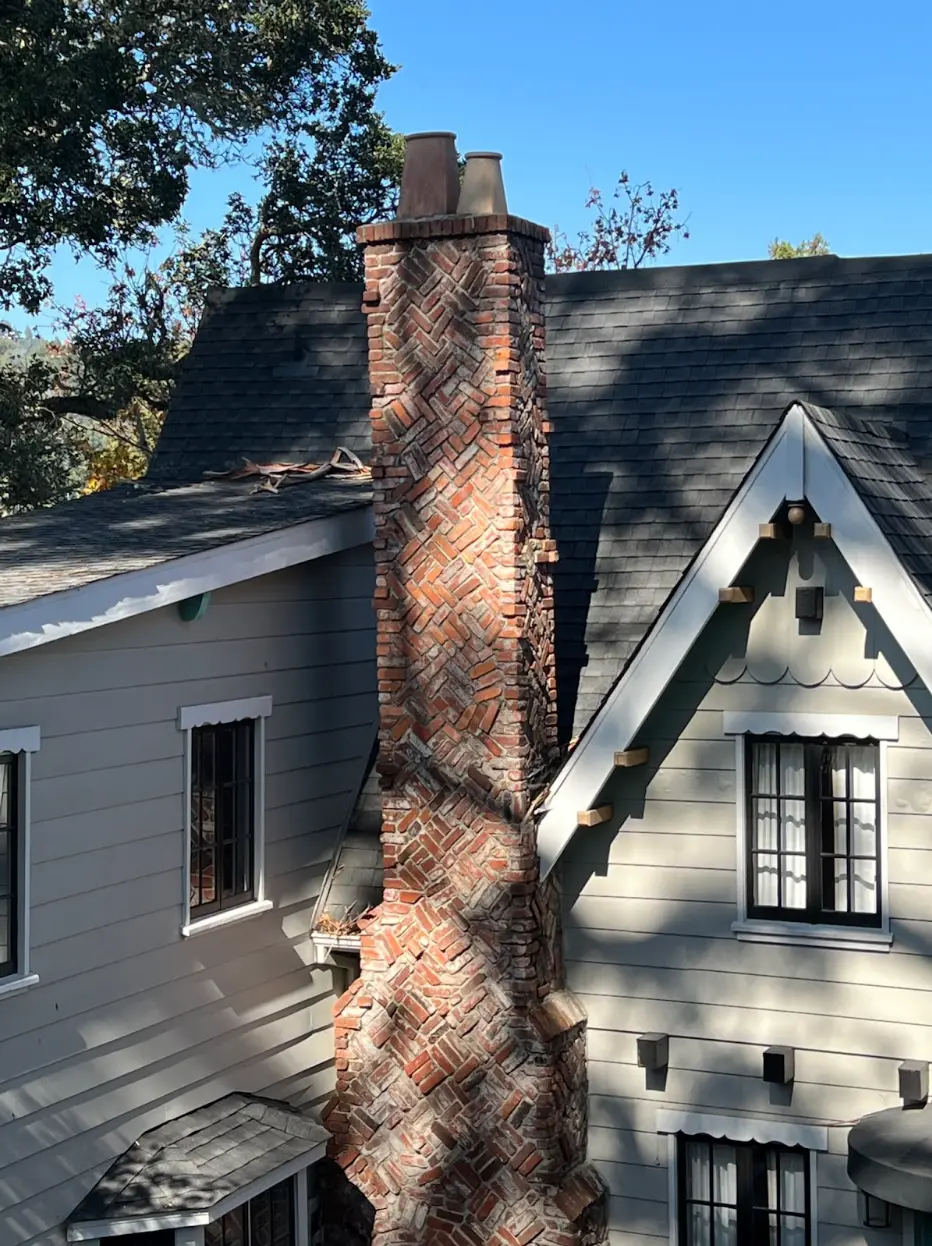 Chimney with no spark arrester that I can see. Question resident to determine if chimney is for fireplace that is used as such or if gas fireplace insert has been installed.
Chimney with no spark arrester that I can see. Question resident to determine if chimney is for fireplace that is used as such or if gas fireplace insert has been installed.
Wood
Modern chimneys and stoves exhaust smoke through a metal stovepipe, which is often enclosed in a wood-framed enclosure and clad with wood siding. Like roof-to-wall complex roof locations, combustible siding can ignite when debris and embers accumulate on the upslope portion of the cladding. To mitigate this risk, replace the wood cladding with a noncombustible material or install step flashing, as with Complex Roof Locations.
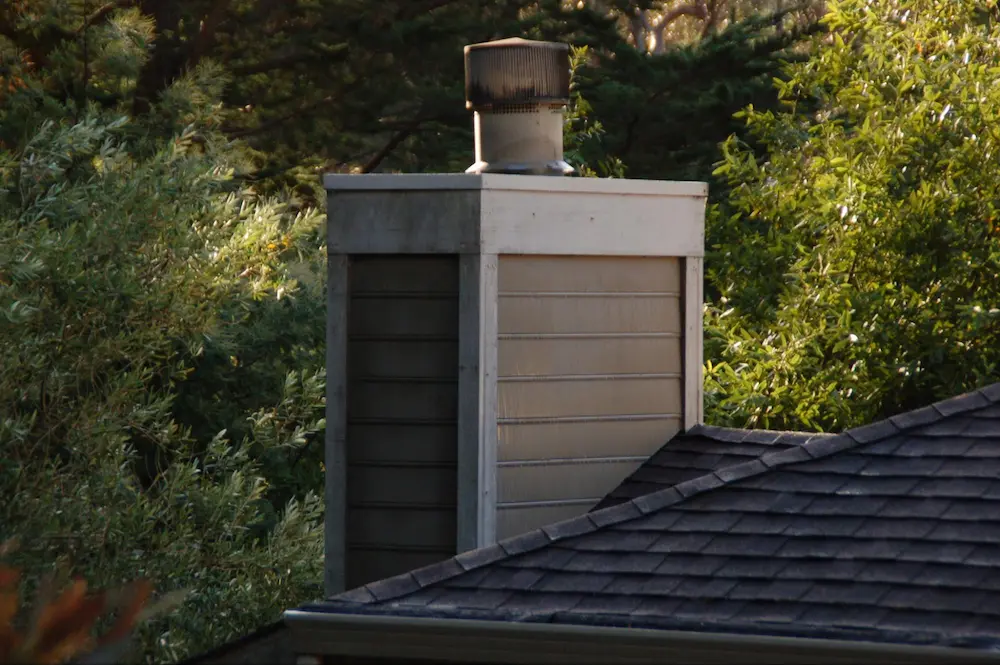
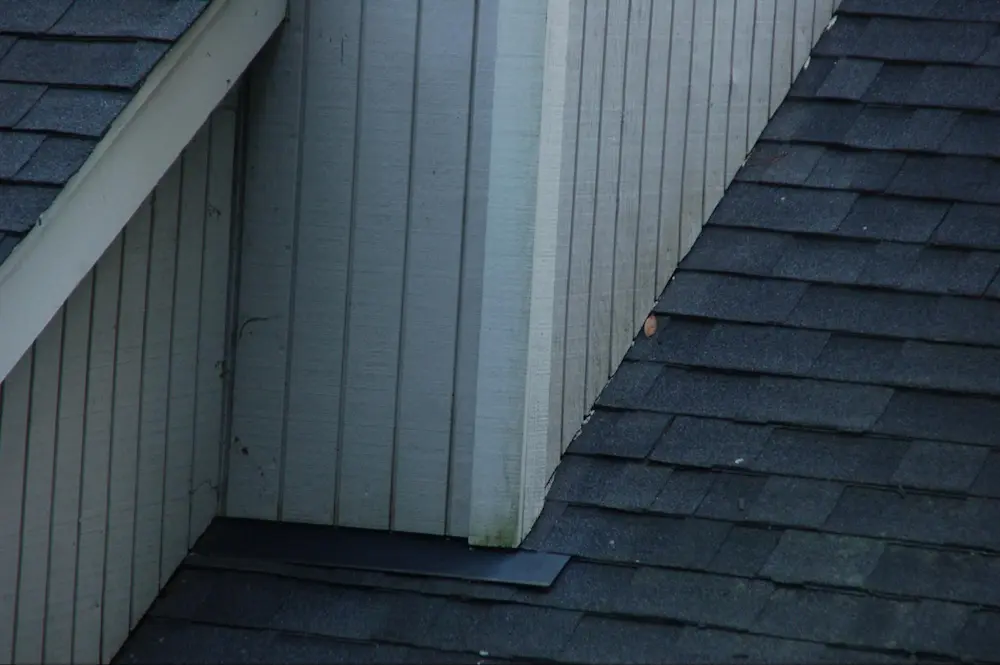 Roof to wall at chimney chases. Even without debris accumulation, if clearance from roof to wall is minimal, as is the case here, ignition can occur via ember accumulation at the base of the wall. Step flashing is useful as a mitigation measure in these situations.
Roof to wall at chimney chases. Even without debris accumulation, if clearance from roof to wall is minimal, as is the case here, ignition can occur via ember accumulation at the base of the wall. Step flashing is useful as a mitigation measure in these situations.
Fiber cement
Fiber cement is a noncombustible material that protects against ember exposures. Fiber cement is typically smooth and used in horizontal boards but can also be found in a variety of wood-grain textures and patterns, including imitation wood shingle, and is typically painted. The imitation wood pattern can make it difficult to identify, especially from the ground, but look for repeating or uniform grain patterns and lack of true wood features like knots and varied grain. The most reliable way to identify it is to touch it and/or listen to the sound it makes when struck (knocked on) with your hand. If chimney access is not possible but is made of the same material as the siding, consult the Siding section for identification guidance.
Stucco
Stucco is a noncombustible material that protects against ember, radiant heat, and direct flame exposures. It is common in Southern California and consists of plaster materials applied in successive layers (traditional “three-coat application” is common) on top of a wire lattice (i.e., lath) to provide a substructure. If chimney access is not possible but is made of the same material as the siding, consult the Siding section for identification guidance.
Debris present
Accumulated plant debris is always an ember ignition hazard and must be removed and regularly maintained to prevent further build up. However, like other roof-to-wall complex roof locations, chimneys are by nature prone to plant debris accumulation. During a wind-driven wildfire, plant debris can be blown from surrounding vegetation and accumulate upslope from a chimney or stovepipe, even if it is otherwise well maintained. So, a more resilient (passive) solution like noncombustible cladding or flashing is preferred.
Spark arrestor present
To prevent embers exiting the chimney from landing on the roof or nearby vegetation and potentially causing a fire, spark arrestors are required on all wood-burning fireplace and stove chimneys. Note that spark arrestors are different than chimney caps (which prevent large items falling into the chimney) and include a metal mesh screen.
\
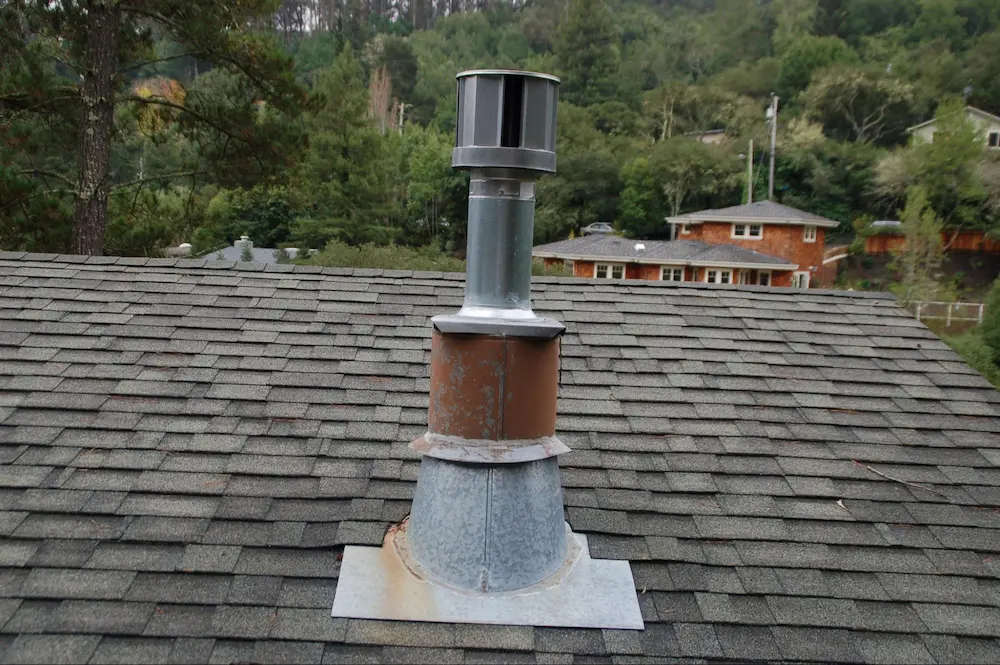 Gas fireplace exhaust exhaust.
Gas fireplace exhaust exhaust.
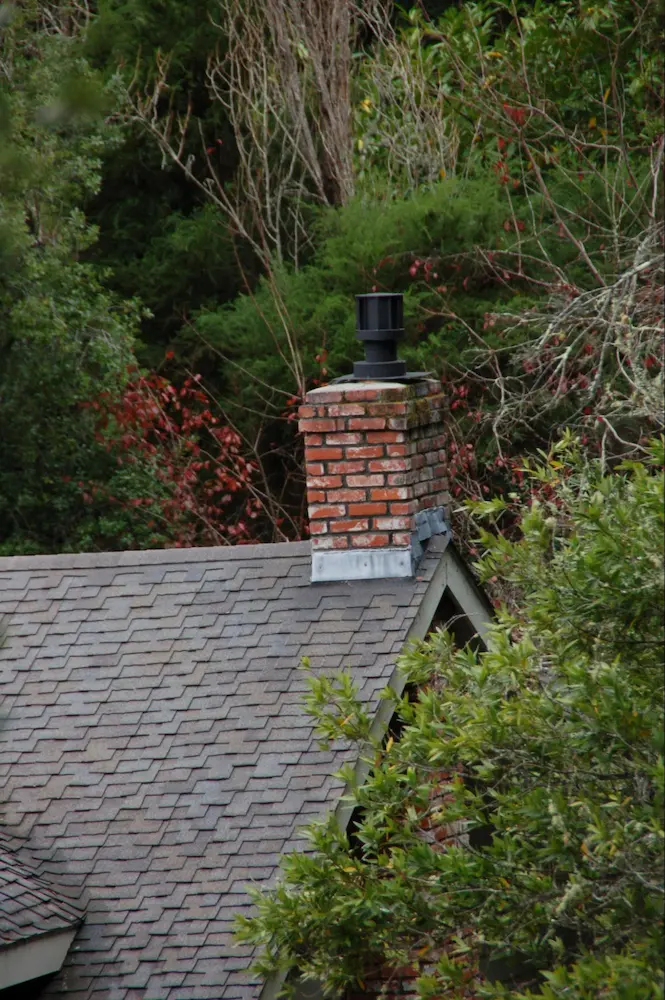 Brick chimney. Looks like gas fire place exhaust.
Brick chimney. Looks like gas fire place exhaust.
Spark arrestor screen size
The aperture of the spark arrestor metal mesh screen must be small enough to prevent embers with the ability to start a fire from existing the chimney. Jurisdictions vary in their requirements, but an aperture of between 3/8 and 1/2 inch. Note that diagonal meshes can have apertures larger than 1/2 inch and so are not technically compliant and not recommended on new installs. We do not advocate replacing diagonal mesh spark arrestors that may have apertures slightly larger than 1/2 inch.
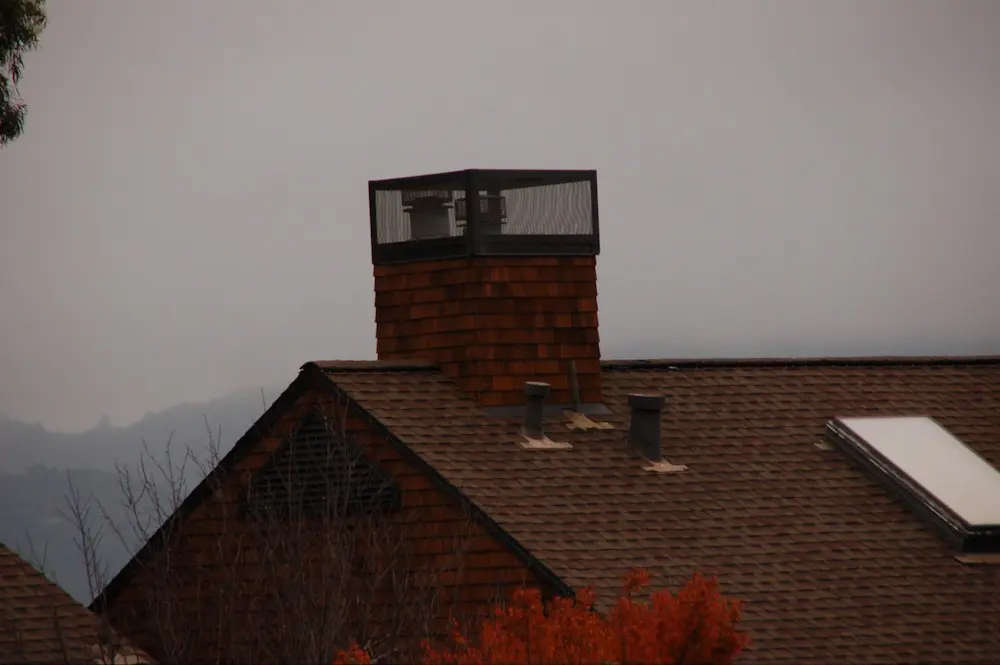 Brick chimney with spark arrestor.
Brick chimney with spark arrestor.
Distance to trees
In addition to defending against wildfires, we want to prevent starting them. Many jurisdictions require trees and other vegetation be pruned so they are not inadvertently ignited by the hot gases and smoke as they exit the chimney or stovepipe. We recommend pruning at least 20 feet from the opening to provide several years of compliance as trees grow back.\